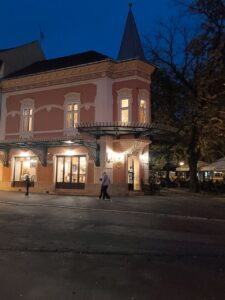Serbian real estate market: regional specificities
The Serbian real estate market has been experiencing significant growth and transformation in recent years, driven by various economic factors and demographic trends. However, the market is not uniform across the country; it exhibits distinct regional specificities that influence property values, demand, and investment opportunities. Understanding these regional differences is crucial for investors, homebuyers, and real estate professionals looking to navigate this evolving landscape effectively.
Urban vs. Rural Dynamics
In Serbia, the urban real estate market, particularly in cities like Belgrade and Novi Sad, is characterized by high demand and rising property prices. Belgrade, as the capital and largest city, attracts both domestic and international investors due to its vibrant economy, cultural attractions, and educational institutions. The demand for residential properties in urban areas is fueled by a growing population, with many young professionals seeking modern living spaces close to employment opportunities. Consequently, urban areas often see a surge in new developments, including luxury apartments and commercial spaces.
Conversely, rural areas in Serbia face different challenges. While property prices in these regions are significantly lower than in urban centers, the demand for real estate is often stagnant. Many rural areas are experiencing population decline as younger generations migrate to cities for better job prospects. This trend has led to an oversupply of properties in some rural regions, resulting in lower prices and limited investment interest. However, there is potential for growth in rural tourism and agricultural investments, which could revitalize certain areas and create new opportunities for real estate development.
The contrast between urban and rural dynamics highlights the importance of regional analysis in the Serbian real estate market. Investors must consider factors such as population trends, economic activity, and infrastructure development when evaluating potential opportunities. Understanding these dynamics can help stakeholders make informed decisions that align with their investment goals.
Regional Economic Influences
The economic landscape of Serbia is diverse, with different regions exhibiting varying levels of development and investment potential. The northern province of Vojvodina, for instance, is known for its agricultural productivity and industrial base, which has attracted investment in both residential and commercial real estate. Cities like Novi Sad and Subotica are experiencing growth in property development, driven by their strategic locations and improving infrastructure. The presence of universities and cultural events, such as the EXIT festival in Novi Sad, further enhances the appeal of these cities for both residents and investors.
In contrast, the southern regions of Serbia, including areas like Niš and Leskovac, face economic challenges that impact the real estate market. These regions have historically been less developed, with higher unemployment rates and lower income levels. As a result, the demand for real estate in these areas is often subdued, leading to lower property values and limited new developments. However, there are ongoing efforts to stimulate economic growth through government initiatives and foreign investment, which could eventually lead to a more dynamic real estate market in the south.
Understanding the regional economic influences is essential for anyone looking to invest in Serbian real estate. By analyzing local economic conditions, investors can identify areas with growth potential and make strategic decisions that align with broader market trends. This regional perspective can also help mitigate risks associated with investing in less developed areas.
Infrastructure and Connectivity
Infrastructure plays a critical role in shaping the Serbian real estate market, particularly in terms of connectivity and accessibility. Major cities like Belgrade benefit from well-developed transportation networks, including highways, railways, and an international airport, which facilitate the movement of people and goods. This connectivity enhances the attractiveness of urban properties, as residents and businesses alike seek locations that offer convenient access to essential services and amenities. The ongoing investment in infrastructure projects, such as the construction of new roads and public transport systems, further supports the growth of the urban real estate market.
In contrast, some rural areas in Serbia struggle with inadequate infrastructure, which can hinder real estate development and investment. Limited access to transportation and basic services can deter potential buyers and investors, leading to stagnation in property values. However, there are initiatives aimed at improving infrastructure in these regions, which could unlock new opportunities for real estate development. For example, the government has been working on projects to enhance road connectivity and improve public services in rural areas, potentially making them more attractive for investment.
The impact of infrastructure on the Serbian real estate market underscores the importance of considering connectivity when evaluating investment opportunities. Investors should assess the current state of infrastructure in a given region and consider future developments that could enhance property values and demand. By focusing on areas with strong infrastructure and connectivity, stakeholders can position themselves for success in the evolving Serbian real estate landscape.
In conclusion, the Serbian real estate market is characterized by significant regional specificities that influence property values, demand, and investment opportunities. Understanding the dynamics between urban and rural areas, regional economic influences, and the role of infrastructure is essential for anyone looking to navigate this complex market. As Serbia continues to develop and modernize, staying informed about these regional differences will be crucial for making informed real estate decisions and capitalizing on emerging opportunities.




